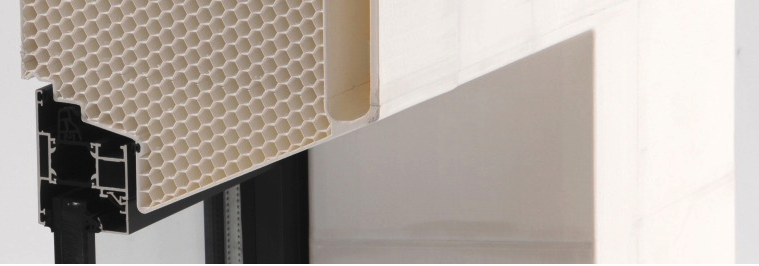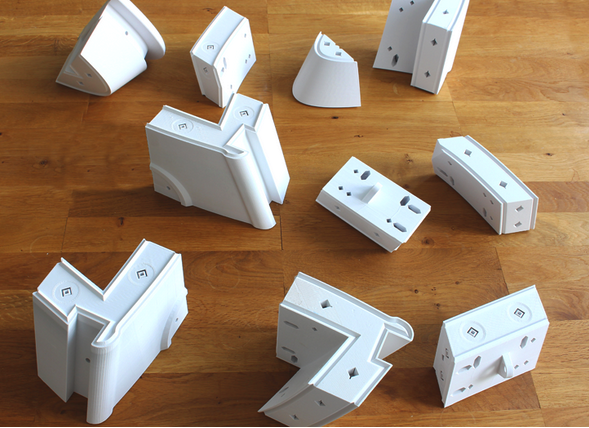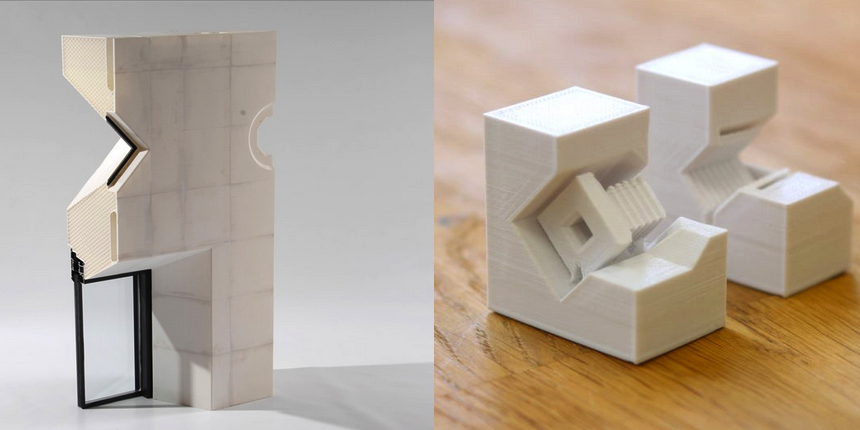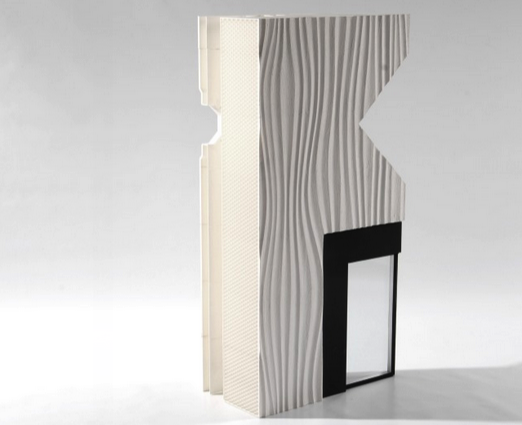The construction industry has been rather stagnant for the past several decades, perhaps even longer. When you look at how a home is built today, in comparison to how they were constructed back in the 1920s, not all that much has changed. This is very unique when you consider how far we have come with technology in the past 100 years. While we’ve seen automobiles, computers, lighting systems and other technology come about and subsequently greatly improve, this has not been the case within the construction industry.
3D printing can change that though, and many architects are now starting to look at this technology as a means to doing just that. There have already been buildings 3D printed, as well as internal wall structures, and other architectural forms, yet it still appears as though we are at least a decade or longer away from actually seeing 3D printing begin to be adopted into mainstream construction.
 For two designers from the Netherlands, named Hans Lankhaar, and Bram van den Haspel, they hope to change all of this with a new way of looking at the idea of using 3D printing within architecture. Through their company, Lab3d, they have figured out a way in which they can 3D print large buildings including features which other 3D printing technologies have yet to accomplish.
For two designers from the Netherlands, named Hans Lankhaar, and Bram van den Haspel, they hope to change all of this with a new way of looking at the idea of using 3D printing within architecture. Through their company, Lab3d, they have figured out a way in which they can 3D print large buildings including features which other 3D printing technologies have yet to accomplish.
“We are both fascinated by the possibilities of 3d printing,” Lankaar and Haspel explain. “The world is on the verge of a new era of product design and product distribution. Lab3d aims to contribute to this transition with clever and feasible 3d designs and services that fit the context of the real world.”
Lab3d’s contribution appears to be on the verge of taking a huge step in the many strides required to help 3D printed construction enter the mainstream. While we all know how slow 3D printing can be, we also know that if you were to neglect print resolution, speeds could increase significantly. Many of the current 3D printed construction projects tend to do just that — they print large coarse structures quite rapidly. However, these coarse structures do not exhibit the properties that are needed to 3D print an entire building. Sure, it can be used for creating the hollow walls of buildings, but what good is that if you still need to manually add in the insulation, piping, and other features found within a house?
Lab3d has developed a 3D printing method that will certainly help answer this question, and in doing so, they actually 3D printed an exterior wall (façade) prototype of a building.
“A solution is parallel printing. A large product can be divided in smaller elements and produced in an array of printers maintaining a high resolution and keeping up the speed,” Haspel and Lankhaar explain. “We are developing innovative ways to connect these smaller elements in a solid way.”
In a project that they worked on with delta sync, using this method of parallel printing, they developed a super lightweight, yet energy efficient façade, one which was 3D printed at a very high resolution, allowing for the integration of insulation, window frames and even piping. It utilizes a special connection system for smaller 3D printed objects, including plug-like connectors and spring systems which are virtually impossible to create without the use of 3D printing. They have also teamed with a company called Henkel to develop and test different adhesives for adhering PLA to itself.
“High-resolution printing allows for the integration of construction, all types of piping, window frames (and such), and even thermal insulation in one material,” they explain. “Common insulation materials like mineral wool doesn’t add strength to the building. The printed wall has an outer and inner shell of 4 millimeter with a honeycomb structure in between. This honeycomb structure not only gives the façade it’s necessary strength and stiffness, but has fine insulating properties as well. “
In the future, the two men plan to manipulate the geometry of the internal honeycomb structure in order to create even better insulating properties. Already though, the 3D printed honeycomb interior has proven to perform much better than the more conventional mineral wool insulation seen in many buildings today.
 Lab3d also says that they are able to greatly improve ventilation, and “electrics” within a building using this parallel printing method.
Lab3d also says that they are able to greatly improve ventilation, and “electrics” within a building using this parallel printing method.
“While it’s probably still a decade or so away before high resolution 3D printers will take over the building industry, the experiment already shows it’s huge potential,” the two explain. “Eventually 3D printed buildings will not only outperform conventional buildings but they will be cheaper and faster to build as well.”
While this technology is far from being able to 3D print entire buildings from start to finish, it is one huge step in the right direction. What do you think about Lab3d’s new printing method? Does it make sense for the construction industry? Discuss in the Parallel Printing forum thread on 3DPB.com.
Subscribe to Our Email Newsletter
Stay up-to-date on all the latest news from the 3D printing industry and receive information and offers from third party vendors.
You May Also Like
Gorilla Sports GE’s First 3D Printed Titanium Cast
How do you help a gorilla with a broken arm? Sounds like the start of a bad joke a zookeeper might tell, but it’s an actual dilemma recently faced by...
Nylon 3D Printed Parts Made More Functional with Coatings & Colors
Parts 3D printed from polyamide (PA, Nylon) 12 using powder bed fusion (PBF) are a mainstay in the additive manufacturing (AM) industry. While post-finishing processes have improved the porosity of...
$25M to Back Sintavia’s Largest Expansion of Metal 3D Printing Capacity Since 2019
Sintavia, the digital manufacturing company specializing in mission-critical parts for strategic sectors, announced a $25 million investment to increase its production capacity, the largest expansion to its operations since 2019....
Velo3D Initiates Public Offering in a Bid to Strengthen Financial Foundations and Drive Future Growth
Velo3D (NYSE: VLD) has been among a number of publicly traded 3D printing firms that have attempted to weather the current macroeconomic climate. After posting a challenging financial report for 2023,...


































